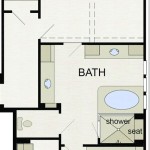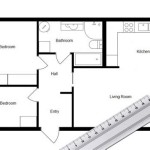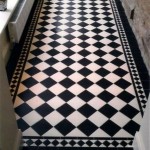Program to Design House Floor Plans: A Comprehensive Guide
Designing a house floor plan is a significant undertaking, whether for a new construction project, a renovation, or simply visualizing a potential space. The advent of computer-aided design (CAD) software and specialized floor plan programs has revolutionized this process, offering individuals and professionals alike powerful tools to create detailed and accurate representations of their envisioned homes. These programs provide a range of features, from basic drafting tools to advanced 3D modeling capabilities, enabling users to explore various design options and refine their plans before any physical construction begins. This article will explore the functionality, benefits, and key considerations involved in utilizing programs for designing house floor plans.
The increasing accessibility and user-friendliness of floor plan design software have made it possible for individuals with varying levels of technical expertise to participate actively in the design process. While professional architects and designers still utilize these tools for complex projects, homeowners can now leverage them to experiment with layouts, visualize furniture placement, and gain a better understanding of spatial relationships. This collaborative approach can lead to more informed decision-making and ultimately, a more satisfying and functional living space. Furthermore, the digital nature of these programs allows for easy sharing and modification of plans, facilitating communication among homeowners, contractors, and other stakeholders.
Understanding the Functionality of Floor Plan Design Programs
At their core, floor plan design programs provide a virtual environment for creating and manipulating architectural drawings. The fundamental building blocks of these programs include lines, walls, doors, windows, and other structural elements. Users can draw these elements using a mouse and keyboard or, in some cases, through touchscreen interfaces. The software precisely calculates dimensions and areas, ensuring that the resulting plan is accurate and proportional. Most programs offer a library of pre-designed objects, such as furniture, appliances, and fixtures, which can be easily dragged and dropped into the plan to visualize the arrangement of the space. These libraries often include standard sizes and dimensions, further enhancing the accuracy of the design.
Beyond basic drawing tools, advanced floor plan design programs offer a range of sophisticated features. These may include automated wall creation, which simplifies the process of drawing walls by accounting for standard wall thicknesses and junctions. Layer management allows users to organize different elements of the plan, such as electrical wiring, plumbing, and structural components, into separate layers that can be toggled on or off for clarity. Dimensioning tools automatically calculate and display the dimensions of walls, rooms, and other features, eliminating the need for manual measurement. Some programs also include features for calculating material quantities, such as the amount of flooring or paint required, which can be helpful for budgeting and procurement.
The ability to create three-dimensional models from two-dimensional floor plans is another crucial feature of many design programs. These 3D models allow users to visualize the space from different perspectives and gain a more realistic understanding of the overall design. Users can often walk through the virtual space, adjust lighting and materials, and even create rendered images for presentation purposes. This can be particularly useful for identifying potential design flaws or areas for improvement before any physical construction takes place.
Benefits of Utilizing Floor Plan Design Programs
The advantages of using floor plan design programs are numerous, extending beyond the simple creation of architectural drawings. These programs offer a significant increase in accuracy compared to manual drafting methods, reducing the likelihood of errors and ensuring that the final construction aligns with the intended design. The digital format also allows for easy editing and revision, making it simple to experiment with different layouts and design options. Changes can be made quickly and efficiently, without the need to redraw the entire plan from scratch.
Visualization is another key benefit. The ability to create 3D models and rendered images allows users to experience the space virtually before it is built. This can be invaluable for identifying potential problems, such as awkward room proportions or inadequate lighting, and making adjustments accordingly. Furthermore, visualization tools can help communicate the design to other stakeholders, such as contractors, subcontractors, and family members, ensuring that everyone is on the same page. The ability to see the finished product in advance can also significantly reduce the risk of disappointment or costly changes during construction.
Floor plan design programs can also improve collaboration among different parties involved in the project. Digital plans can be easily shared via email or cloud-based platforms, allowing architects, engineers, contractors, and homeowners to access the latest version of the design from anywhere. This facilitates communication and coordination, reducing the likelihood of misunderstandings and delays. Some programs even offer collaborative editing features, allowing multiple users to work on the same plan simultaneously.
Finally, these programs can contribute to cost savings. By identifying potential design flaws early on, they can help avoid costly rework during construction. The ability to calculate material quantities accurately can also help prevent overspending on materials. Furthermore, the visualization tools can help homeowners make informed decisions about finishes, fixtures, and other design elements, preventing impulsive purchases that may not ultimately suit the space.
Key Considerations When Choosing a Floor Plan Design Program
Selecting the right floor plan design program depends on individual needs and technical skills. There are numerous options available, ranging from free, basic programs to professional-grade software with advanced features. The first consideration is the user's experience level. Beginners may prefer a program with a simple, intuitive interface and clear tutorials. More experienced users may require a program with more advanced features and customization options.
The specific features required for the project are another important consideration. If the user only needs to create basic 2D floor plans, a simple drafting program may suffice. However, if the user wants to create 3D models, generate rendered images, or perform advanced calculations, a more sophisticated program will be necessary. It's crucial to assess the project's scope and complexity and choose a program that offers the necessary functionality without being overly complicated.
Compatibility with other software is also an essential factor. If the user plans to collaborate with architects or engineers, it's essential to choose a program that is compatible with their software. Most professional-grade CAD programs can import and export files in standard formats, such as DWG and DXF. However, compatibility issues can still arise, so it's essential to verify compatibility before committing to a particular program. Furthermore, consider the operating system compatibility. Some programs are designed for Windows only, while others are compatible with macOS or even web-based. Ensuring the program works seamlessly with the user's computer is crucial.
Finally, the cost of the program is an important consideration. Free floor plan design programs are available, but they often have limited features and may display advertisements. Paid programs offer more features and support, but they can be expensive. Consider the long-term cost of the program, including any subscription fees or upgrade costs. Weigh the cost against the benefits and choose a program that offers the best value for money.
In conclusion, utilizing a program to design house floor plans provides numerous benefits, including increased accuracy, improved visualization, enhanced collaboration, and potential cost savings. Choosing the right program requires careful consideration of individual needs, technical skills, project requirements, compatibility, and budget. By carefully evaluating these factors, individuals and professionals can select a floor plan design program that empowers them to create detailed, accurate, and visually compelling representations of their envisioned homes.

Floor Plans Types Symbols Examples

House Plans How To Design Your Home Plan Online

Free House Design Software Home And Plans

House Plans How To Design Your Home Plan Online

Free House Design Software Home And Plans

Small House Design 2024005 Pinoy Eplans Modern Plans Floor

20 Best Floor Plan Apps To Create Your Plans Foyr

Home Design Software Your House Online

Floor Plan Creator Software 2d To 3d Plans

Floor Plan Creator Planner 5d







